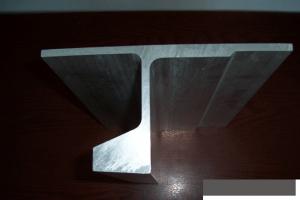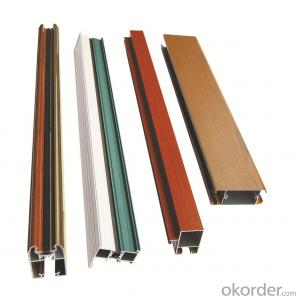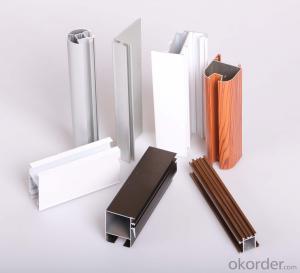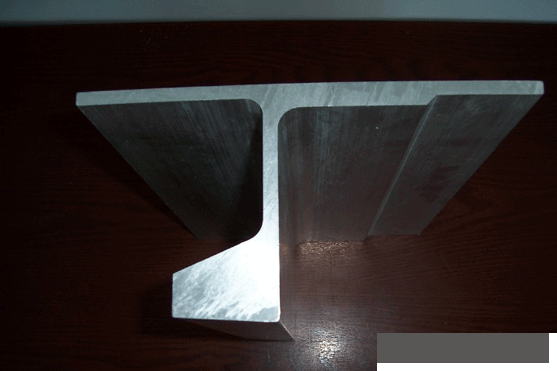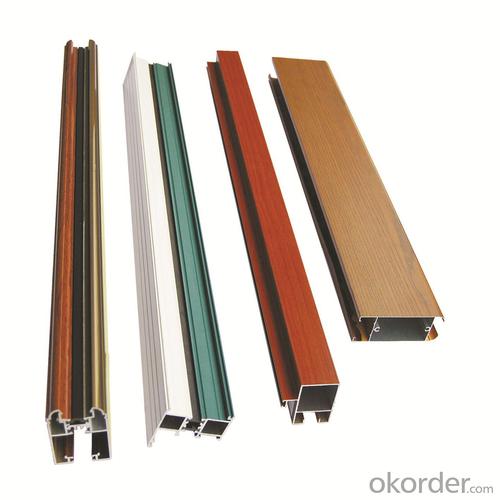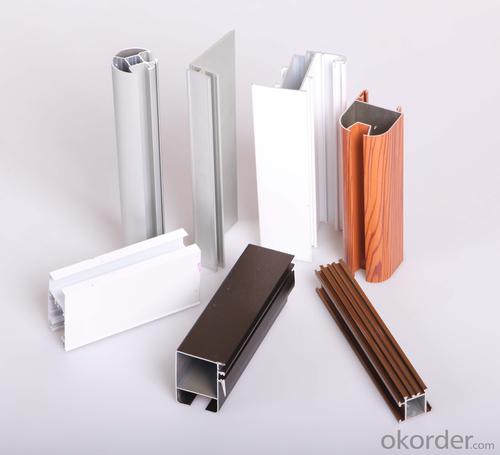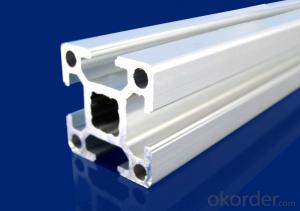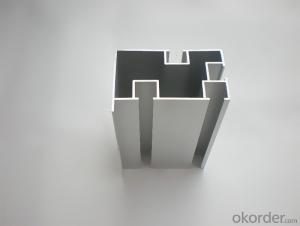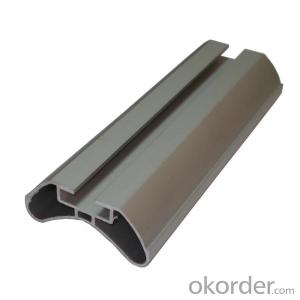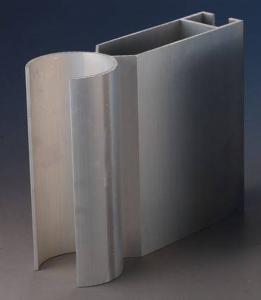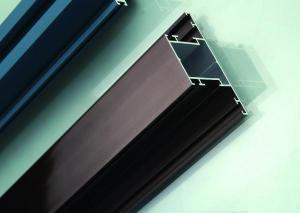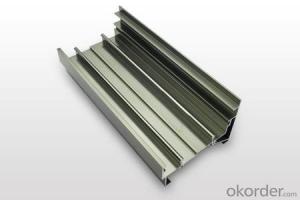Standard Aluminum Extrusion Profiles - Extruded Aluminium Profiles 6063 T6
- Loading Port:
- China Main Port
- Payment Terms:
- TT OR LC
- Min Order Qty:
- -
- Supply Capability:
- -
OKorder Service Pledge
Quality Product, Order Online Tracking, Timely Delivery
OKorder Financial Service
Credit Rating, Credit Services, Credit Purchasing
You Might Also Like
Material | Alloy 6063,6061,6005or according to customer’s choice |
Temper | T3, T4, T5, T6 |
Surface | Anodize, electrophoresis, powder coating, PVDF coating, wood grain painting, matted, etc. |
Color | Any colour based on Standard Germany RAL Mark |
Length | Coating 6.5 meters, Anodizing 6.5 meters, Mill finish 5 meters |
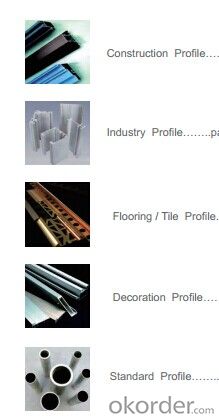
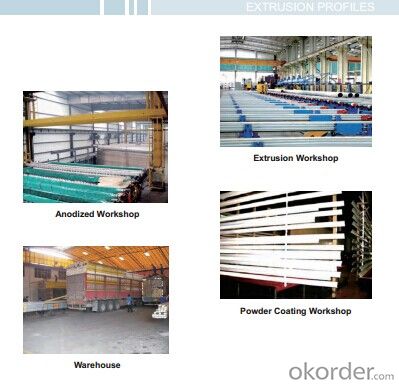
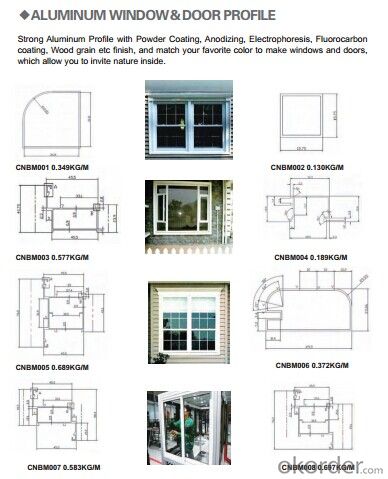
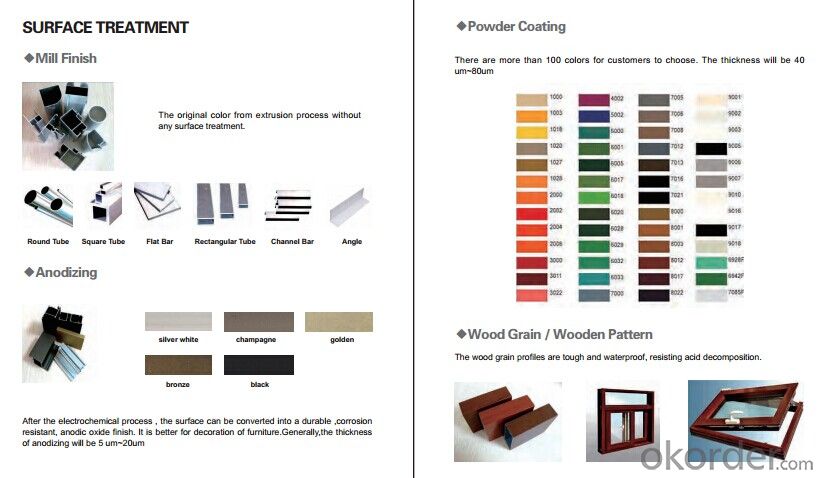
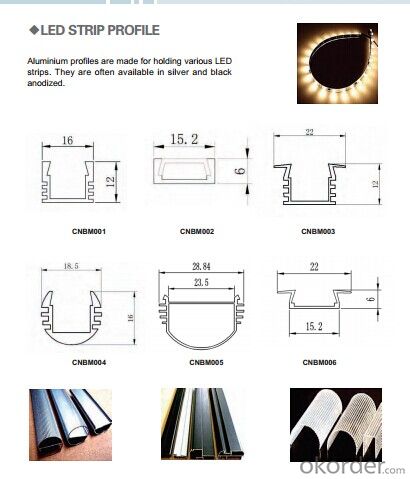
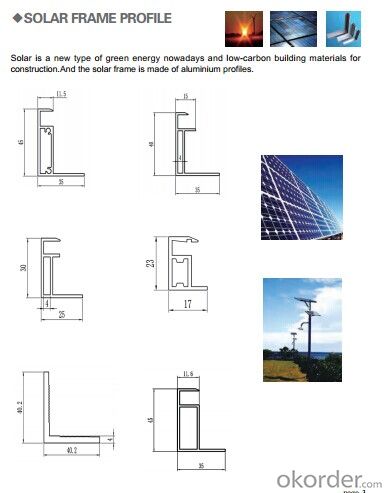
- Q: Are aluminum profiles resistant to pests or insects?
- Yes, aluminum profiles are generally resistant to pests or insects. Due to their non-porous and smooth surface, pests and insects find it difficult to penetrate or damage aluminum profiles.
- Q: What are the different surface engraving options for aluminum profiles?
- Some of the different surface engraving options for aluminum profiles include laser engraving, diamond drag engraving, chemical etching, and mechanical engraving.
- Q: Can aluminum profiles be used in the construction of data centers?
- Yes, aluminum profiles can be used in the construction of data centers. Aluminum profiles have several advantages that make them suitable for use in this industry. Firstly, aluminum is lightweight yet strong, making it an ideal material for constructing structures that need to support heavy loads. Data centers often house racks of servers and other equipment, so using aluminum profiles can provide the necessary strength without adding excessive weight. Secondly, aluminum profiles are highly customizable and can be easily fabricated to meet specific design requirements. This flexibility allows for efficient use of space within a data center, as the profiles can be tailored to fit the layout and dimensions of the facility. Additionally, aluminum is resistant to corrosion, which is crucial in a data center environment where equipment generates heat and humidity levels can be high. By using aluminum profiles, the risk of rust and corrosion is minimized, ensuring the longevity and reliability of the infrastructure. Furthermore, aluminum is a sustainable and recyclable material, which aligns with the growing demand for environmentally friendly construction practices. Using aluminum profiles in data center construction contributes to reducing the carbon footprint of the facility. In summary, aluminum profiles can indeed be used in the construction of data centers due to their strength, customization capabilities, resistance to corrosion, and sustainability.
- Q: Are aluminum profiles suitable for sports equipment?
- Yes, aluminum profiles are suitable for sports equipment. Aluminum is lightweight, durable, and corrosion-resistant, making it an ideal material for various sports applications such as bicycles, tennis rackets, golf clubs, and ski poles. Additionally, aluminum profiles can be easily formed and customized to meet specific design requirements, making them a popular choice in the sports industry.
- Q: This question asks whether aluminum profiles can be utilized to minimize heat loss or gain within buildings.
- <p>Yes, aluminum profiles can be used to reduce heat loss or gain in buildings. They are often used in combination with thermal break technology, which prevents heat transfer across the aluminum frame. This technology can significantly improve a building's energy efficiency by reducing heat conduction through the frame. Additionally, aluminum profiles can be used in the construction of energy-efficient windows and doors, further enhancing insulation and reducing heat transfer. The lightweight and durable nature of aluminum also makes it an attractive material for sustainable building practices.</p>
- Q: Are aluminum profiles suitable for use in the defense industry?
- Yes, aluminum profiles are suitable for use in the defense industry. Aluminum is a lightweight material that offers excellent strength-to-weight ratio, making it a preferred choice for various applications in the defense sector. Aluminum profiles can be used in the construction of military vehicles, aircraft, and naval vessels, where weight reduction is crucial for improving performance and fuel efficiency. Additionally, aluminum profiles possess high corrosion resistance, which is essential for defense equipment exposed to harsh environments, such as saltwater or extreme weather conditions. They also exhibit good thermal conductivity, allowing for efficient heat dissipation in electronic components and systems. Furthermore, aluminum profiles offer versatility in design and can be easily machined, welded, and formed into complex shapes. This flexibility allows for customization and adaptation to specific defense requirements. The use of aluminum profiles can also contribute to cost-effectiveness, as they are readily available, recyclable, and offer long-term durability. In summary, aluminum profiles are a suitable choice for the defense industry due to their lightweight nature, corrosion resistance, thermal conductivity, versatility, and cost-effectiveness. These properties make them ideal for a wide range of applications, ensuring the durability and performance of defense equipment.
- Q: What are the mechanical properties of aluminum profiles?
- The mechanical properties of aluminum profiles include high strength-to-weight ratio, excellent corrosion resistance, good thermal and electrical conductivity, and the ability to be easily fabricated and welded.
- Q: What are the different types of gaskets used with aluminum profiles?
- Aluminum profiles commonly utilize various types of gaskets. Let's explore a few examples: 1. EPDM Gaskets: Crafted from a synthetic rubber material, EPDM gaskets excel in withstanding weathering, UV radiation, and ozone exposure. They are frequently employed in outdoor scenarios that demand a secure seal and resilience against harsh environmental conditions. 2. Silicone Gaskets: Renowned for their exceptional temperature resistance, silicone gaskets are a preferred option for applications involving extreme heat or cold. They also exhibit favorable resistance to chemicals and UV radiation, rendering them suitable for a wide array of industrial and commercial uses. 3. PVC Gaskets: Composed of a plastic material, PVC gaskets are extensively used due to their remarkable resistance to chemicals, oil, and moisture. They commonly find application in situations necessitating a tight seal, such as doors, windows, and architectural uses. 4. Neoprene Gaskets: Neoprene gaskets are constructed from a synthetic rubber material that offers commendable resistance to oils, chemicals, and weathering. They are frequently employed in machinery and equipment, where both sealing and vibration dampening are required. 5. Nitrile Gaskets: Nitrile gaskets, also known as Buna-N gaskets, are composed of a synthetic rubber material that boasts outstanding resistance to oils, fuels, and solvents. They find common use in automotive and industrial settings where resistance to oil and fuel is critical. These examples are merely a snapshot of the diverse gasket options available for aluminum profiles. The choice of gasket hinges upon the specific requirements of the application, encompassing desired sealing level, environmental conditions, and chemical compatibility.
- Q: This question asks about the various applications of aluminum profiles within the construction industry.
- <p>Aluminum profiles are versatile in construction and have several uses: 1. Structural framing for buildings, providing support and stability. 2. Window and door frames, known for their durability and resistance to corrosion. 3. Facade systems, offering lightweight and aesthetically pleasing exterior solutions. 4. Modular construction, where aluminum profiles can be prefabricated and assembled quickly. 5. Roofing and cladding systems, due to their weather resistance and ease of installation. 6. Handrails and balustrades for safety and design. 7. Solar panel mounting structures, taking advantage of aluminum's lightweight and strength. 8. Scaffolding systems, for temporary construction support. These applications highlight aluminum's adaptability and strength in construction.</p>
- Q: What are the different types of corner connectors used with aluminum profiles?
- Aluminum profiles commonly utilize several types of corner connectors for joining. These connectors facilitate the creation of diverse structures like frames, enclosures, and shelving units. One prevalent corner connector is the 90-degree angle bracket. It possesses a right angle shape with holes on each side to accommodate screws or bolts for fastening the profiles together. The 90-degree angle bracket is adaptable and suitable for various applications. Another corner connector is the 45-degree angle bracket, similar to the 90-degree angle bracket but designed for a 45-degree angle joint between profiles. It finds use in applications requiring slanted or angled structures. T-slot corner connectors are also popular. They have a T-shaped slot for easy insertion of profiles. These connectors are ideal for applications that prioritize adjustability and flexibility, allowing for effortless repositioning and modification of the structure. Some corner connectors are specifically designed for particular profile types, such as the end cap connector. This connector caps off the profile's end, providing a polished appearance and protection against damage. Furthermore, various other corner connectors exist, including corner gussets, angle plates, and corner brackets. Each connector type offers unique features and advantages, catering to different applications and requirements. In summary, the assortment of corner connectors available for aluminum profiles offers a wide range of options for joining and assembling structures. These connectors provide strength, stability, and versatility, making them indispensable components in aluminum profile-based construction projects.
Send your message to us
Standard Aluminum Extrusion Profiles - Extruded Aluminium Profiles 6063 T6
- Loading Port:
- China Main Port
- Payment Terms:
- TT OR LC
- Min Order Qty:
- -
- Supply Capability:
- -
OKorder Service Pledge
Quality Product, Order Online Tracking, Timely Delivery
OKorder Financial Service
Credit Rating, Credit Services, Credit Purchasing
Similar products
Hot products
Hot Searches
Related keywords
